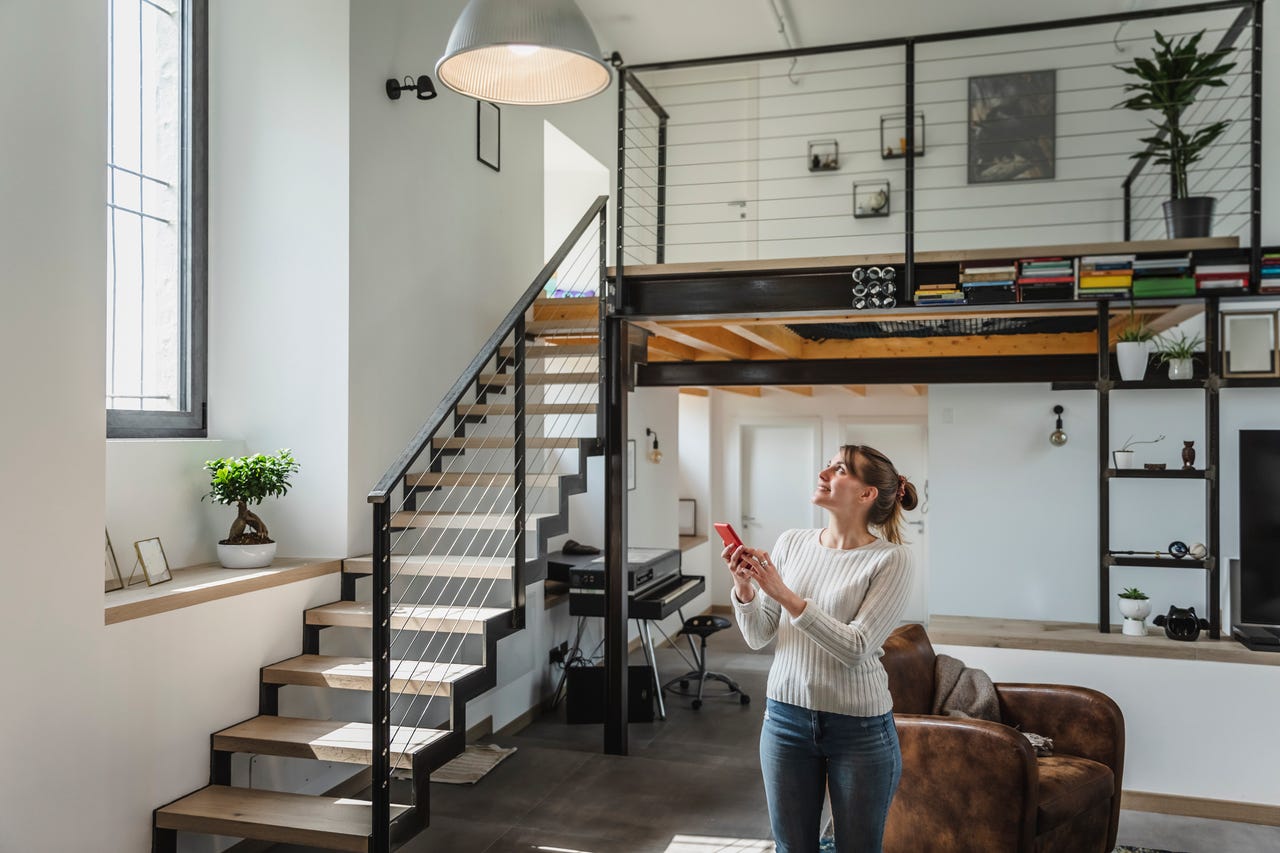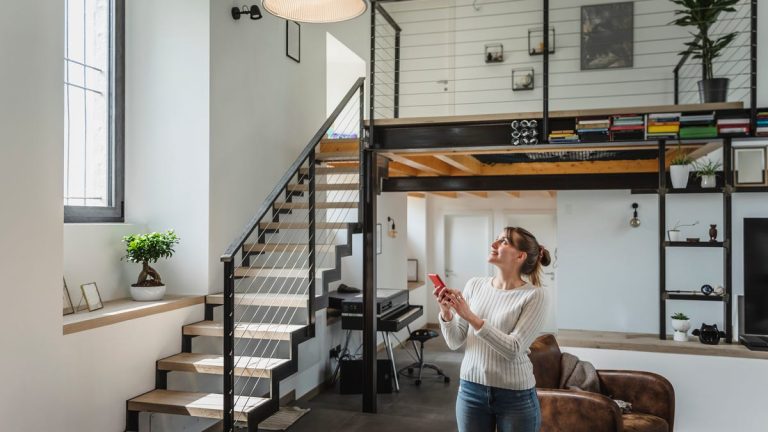 WestEnd61/Getty Images
WestEnd61/Getty Images
Dr. Frankenstein would be proud of my smart home. Like the not-so-great doctor, I built this amazingly capable, but sometimes clumsy, creature myself using parts I scavenged from here and there.
Our smart home has lots of lighting hardware, as well as connectors to our smart thermostat and smart TVs (one Samsung, one Roku).
Plus: Smart Home Starter Pack: 5 devices that will make your life easier
I didn't have a plan when I started this project. Instead, I made everything up along the way. And along the way, I learned a few lessons.
1. Lighting is the killer app
With traditional lighting fixtures, it's nearly impossible to get the mood right. A lamp with a single fixed-wattage bulb only has one brightness level that you can either accept or reject. With three-way bulbs and dimmers, you can have a little more control over the lighting in your space, but it's still hard to get the brightness just right.
That's where smart lighting comes in. Adding smart bulbs to any fixture gives you nearly unlimited control over the intensity of its light. With the right bulb, you can even control its color and warmth. For fixtures where smart bulbs aren't a good fit, you can add the same functionality with a smart switch, which can connect to your network via Wi-Fi or Bluetooth.
Our assorted smart lighting hardware includes 12 Philips Hue bulbs and two Hue light strips, smart Wi-Fi switches from Kasa and Lutron, a custom lighted mirror in the master bathroom, and one quirky Govee lamp in the corner of our office.
It took four separate apps to set up and configure this motley collection of devices, but after the initial configuration, everything can be controlled through the Google Home app or by talking to the Google Assistant using voice commands. You can also take advantage of Google Home's automation features to customize lighting for meals, TV, and bedtime. With presence detection, the lights are smart enough to automatically turn off when everyone leaves the house and turn on when someone returns.
2. Physical switches are still essential
Being able to turn off your lights or set precise dimming levels with a simple voice command or the tap of a smartphone app is really nice. But what happens if your internet connection is interrupted? In that case, a physical switch that works over a local Wi-Fi or Bluetooth connection is essential. You may not have Google Assistant (or Alexa or Siri) available, but as long as there's power, you can still get up and flip a switch like the good ol' days.
Plus: How to achieve a smart home on a budget (and how you can too)
Our Kasa and Lutron switches work even when the network is local only, as do our bulbs and lightstrips connected to our Hue hub. Thankfully, internet outages are rare in our neighborhood, but it's a good idea to have a backup plan for your lighting in case your network goes down.
3. Smart locks and security systems are expensive luxuries
After signing the papers to buy our current home, I briefly considered replacing the electronic lock on our front door with a smart version that could be opened using a smartphone app, and asked myself, “Why would I want to do this?”
Plus: The best smart locks for a secure home
Since I never knew the right answer to that question, my front door still has a non-smart Kwikset lock. I can open the door with the key or by entering one of three numeric codes I programmed (you can easily change these codes if you think there's been a break-in). It locks automatically after 30 seconds, so I don't have to wake up in the middle of the night worrying that I left it unlocked. I replace the batteries and “random visitor” code every year, and honestly, I don't see any reason to replace that middle-class tech with something I can control with an app. I plan to get a smart doorbell with a camera soon as a smart security addition.
4. Smart hubs are still the new standard
If I were building a custom home from the ground up, I would spec it so that everything was controlled by a single smart hub running the latest protocols.
Our electrician raved about a Lutron-based system, but it would cost thousands of dollars to recreate that environment in our apartment, and we'd have to incorporate Hue bulbs into the system for our table lamps. We also looked into Samsung's SmartThings, but at the time it didn't support the hardware we'd already invested in.
Plus: The 4 best smart hubs: smart home control
The problem? This new industry standard sounds great and is supported by all the smart home giants (Apple, Google, Amazon, etc.), but devices that support this standard are only just starting to appear on the market.
Perhaps in a few years' time, we'll be able to migrate our existing infrastructure to a Matter-enabled system (Samsung's new SmartThings Station, which ZDNET picked as the best overall smart home device, looks promising), but for now, we'll wait and see.
5. Choosing a smart assistant matters
“Welcome to your smart home. Are you using Apple, Google or Amazon?”
This should have been in the welcome packet that arrived when you moved into your new home. If you've already invested heavily in Apple HomeKit devices or Amazon's Alexa-enabled hardware, your path forward is already set. In our case, the choice was easy: we have a Google Nest hub in every room, and we can connect all our smart home apps to that infrastructure.
Plus: The best home automation systems
Smart home tech still requires a fair amount of tweaking and manual setup, but once those steps are taken, it's relatively easy to use and extend. Perhaps with widespread adoption of new standards like Matter, you won't need to be a mad scientist to make it all work.

